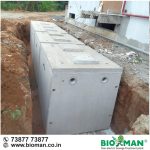Aerial 3D rendering has emerged as a pivotal tool across diverse industries, revolutionizing how we visualize and analyze spatial data. Its significance spans urban planning, construction, agriculture, and environmental monitoring, among others. In this blog post, we delve into recent innovations propelling aerial 3D rendering technology to new heights. From advancements in high-resolution imaging and real-time rendering to the integration of AI and machine learning,
we explore the cutting-edge developments shaping the future of aerial visualization. Join us as we uncover the transformative potential of these innovations and their impact on industries worldwide.
Evolution of Aerial 3D Rendering
The evolution of aerial 3D rendering technology traces back to early attempts at photogrammetry and remote sensing in the mid-20th century. With the advent of digital imaging and GIS technology, aerial rendering underwent a revolution, enabling more precise and detailed visualization. Recent advancements in hardware, such as drones and LiDAR sensors, have facilitated the capture of high-resolution aerial imagery.
Meanwhile, software innovations, including sophisticated rendering algorithms and cloud-based processing, have enhanced the speed and accuracy of rendering. These developments have transformed aerial rendering from a niche application to a vital tool across various industries.
High-Resolution Imaging
Innovations in high-resolution imaging, particularly with drones and LiDAR sensors, have revolutionized aerial 3D rendering. Drones equipped with high-definition cameras capture detailed aerial imagery with unprecedented clarity and accuracy. LiDAR sensors complement this capability by providing precise elevation data, enabling the creation of highly accurate 3D models.
These technologies enhance the level of detail in aerial renderings, allowing for the identification of intricate features and terrain nuances. The combination of high-resolution imaging and LiDAR sensors ensures that aerial 3D renderings faithfully represent the real-world environment, facilitating better decision-making in various applications.
Real-Time Rendering
Real-time rendering techniques, such as GPU-accelerated rendering and cloud-based processing, revolutionize aerial visualization. GPU-accelerated rendering harnesses the power of graphics processing units to rapidly render complex scenes, enabling dynamic visualization with minimal latency. Cloud-based processing further enhances rendering speed and scalability by offloading computation to remote servers.
The benefits of real-time rendering extend to dynamic visualization and decision-making, allowing stakeholders to interactively explore aerial data and make informed decisions on the fly. This agility in visualization empowers users to analyze scenarios in real time, facilitating faster and more effective decision-making processes in various industries.
AI and Machine Learning
AI and machine learning are revolutionizing aerial 3D rendering by automating processes and improving accuracy. AI-driven algorithms enable automated feature extraction from aerial imagery, streamlining the identification of objects and terrain features. Object recognition algorithms enhance efficiency by automatically detecting and classifying objects, such as buildings, vegetation, and infrastructure.
Additionally, machine learning models can refine rendering techniques based on feedback, further improving accuracy and quality. These applications of AI in aerial rendering not only increase efficiency but also enable more detailed and accurate analysis, empowering users to extract valuable insights from aerial data with unprecedented speed and precision.
Virtual Reality and Augmented Reality Integration
The integration of aerial 3D rendering with VR and AR technologies offers transformative possibilities for spatial visualization. VR immerses stakeholders in realistic, interactive environments generated from aerial data, fostering deeper spatial understanding. AR overlays rendered aerial data onto real-world environments, enhancing on-site visualization and decision-making.
These technologies provide stakeholders with immersive experiences that transcend traditional 2D representations, enabling them to explore and interact with aerial data in novel ways. By bridging the gap between digital and physical spaces, VR and AR integration revolutionize how stakeholders engage with and derive insights from aerial 3D renderings.
Industry Applications
Aerial 3D rendering finds diverse applications across industries, transforming urban planning, construction, agriculture, and environmental monitoring. In urban planning, it facilitates city modeling and infrastructure design. Construction benefits from site visualization and progress monitoring. Agriculture utilizes aerial data for crop health assessment and yield prediction.
Environmental monitoring relies on 3D terrain mapping and habitat analysis. Real-world examples include using aerial renderings to optimize city layouts, monitor construction site progress in real-time, assess crop health for precision agriculture, and track environmental changes for conservation efforts. These applications demonstrate the profound impact of aerial 3D rendering on improving efficiency and decision-making across industries.
Challenges and Future Directions
Current aerial 3D rendering technology faces challenges such as data processing bottlenecks and limitations in data resolution. Despite advancements, processing large datasets remains time-consuming and resource-intensive. Additionally, limitations in data resolution affect the accuracy of rendered models. Looking ahead, future advancements may include improved data processing algorithms for faster and more efficient rendering.
Integration of 5G connectivity could enable real-time data streaming and collaborative rendering, enhancing productivity and collaboration. Overcoming these challenges and embracing emerging technologies will unlock new possibilities in aerial 3D rendering, empowering industries with even greater capabilities for visualization and analysis.
Conclusion
Throughout this exploration of aerial 3D rendering technology, we’ve witnessed the remarkable advancements that are revolutionizing industries worldwide. From high-resolution imaging and real-time rendering to AI integration and VR/AR applications, the transformative potential of aerial 3D rendering is undeniable.
At McLine Studios, we’re excited about the future possibilities this technology offers and its role in shaping the future of visualization. We encourage readers to embrace these innovations, explore their applications in their respective fields, and leverage them to unlock new opportunities for creativity, efficiency, and informed decision-making. Together, let’s shape a future where aerial 3D rendering empowers industries to reach new heights.


